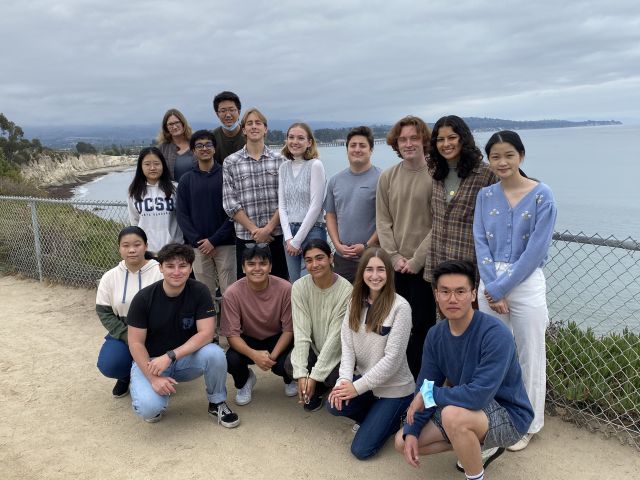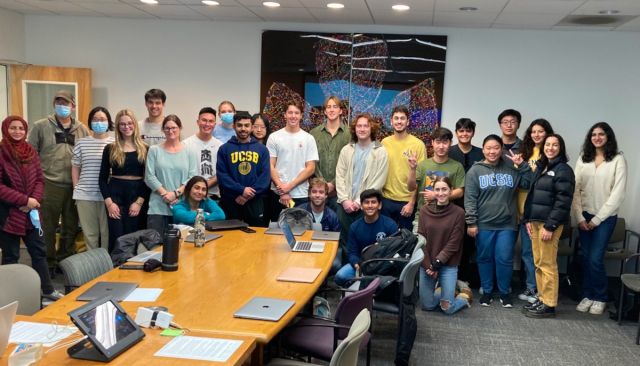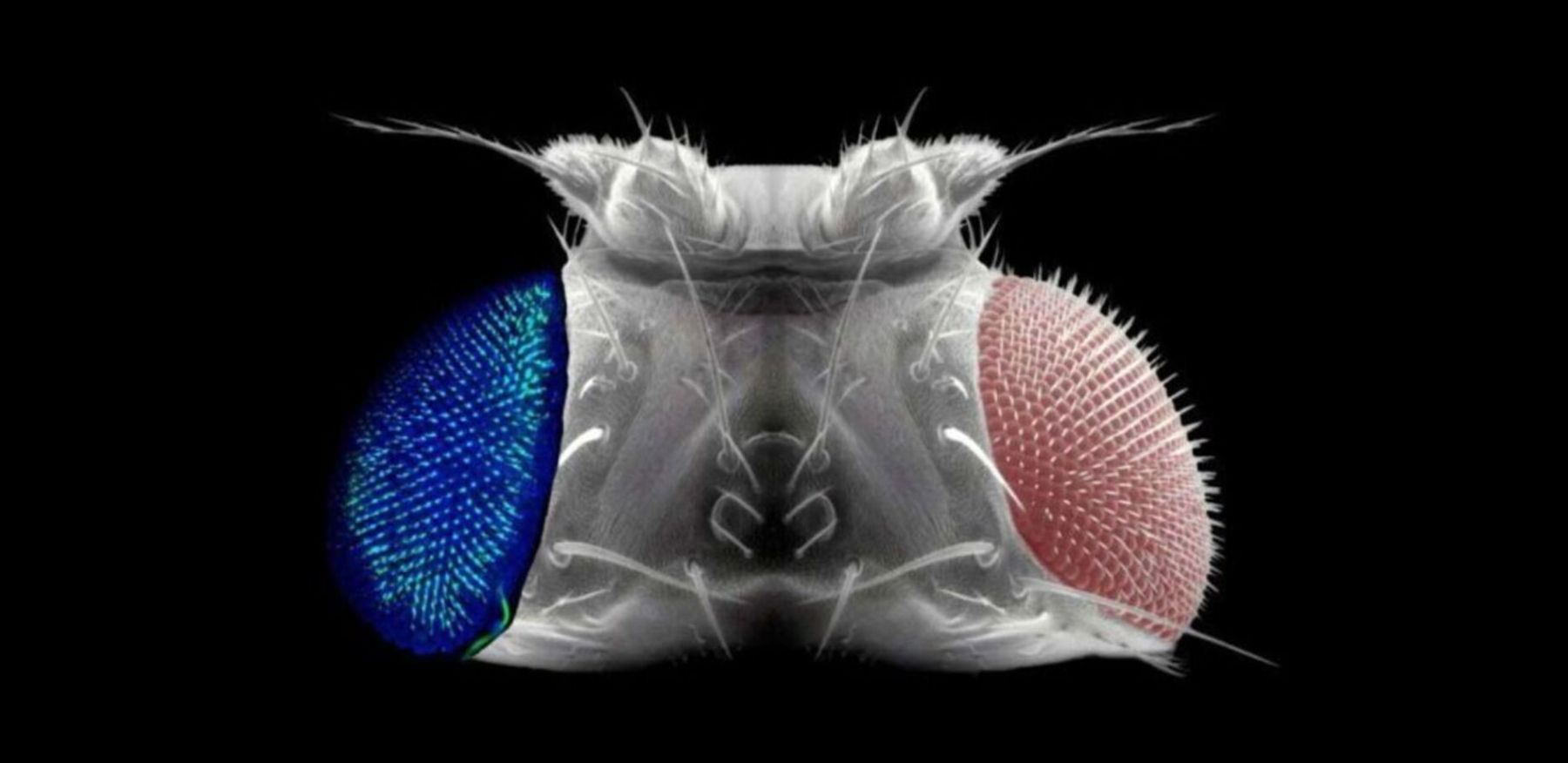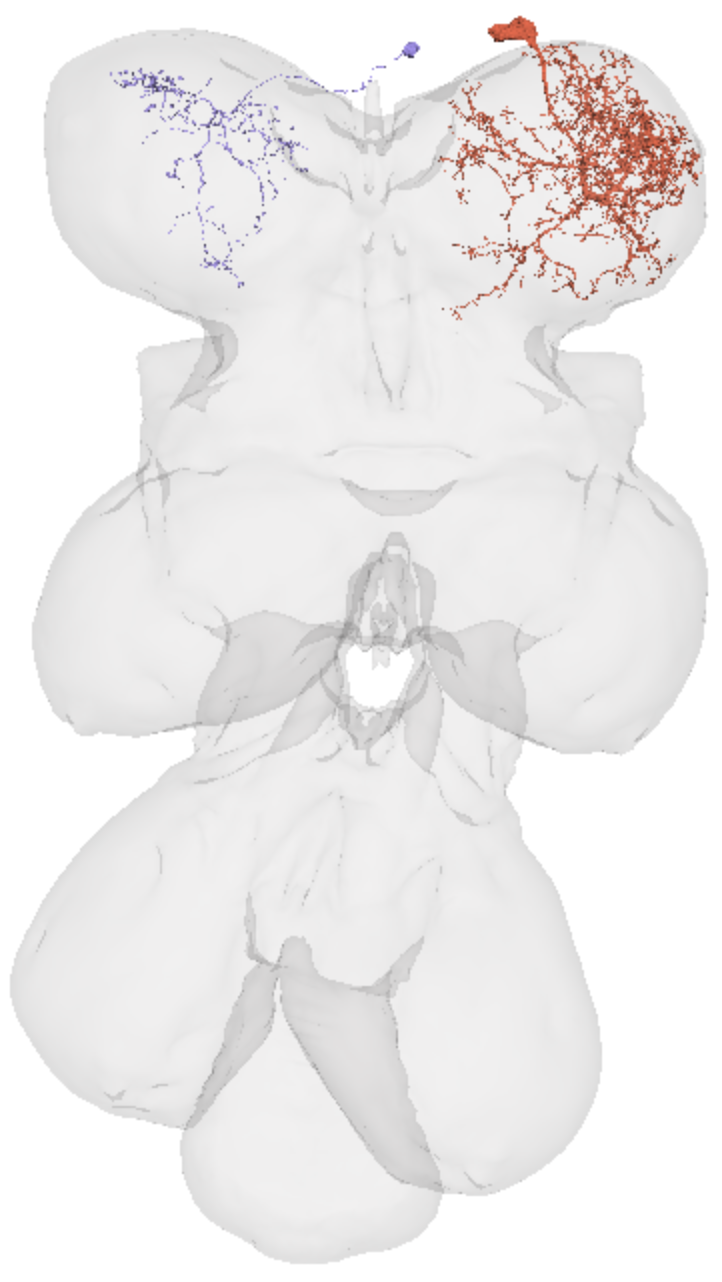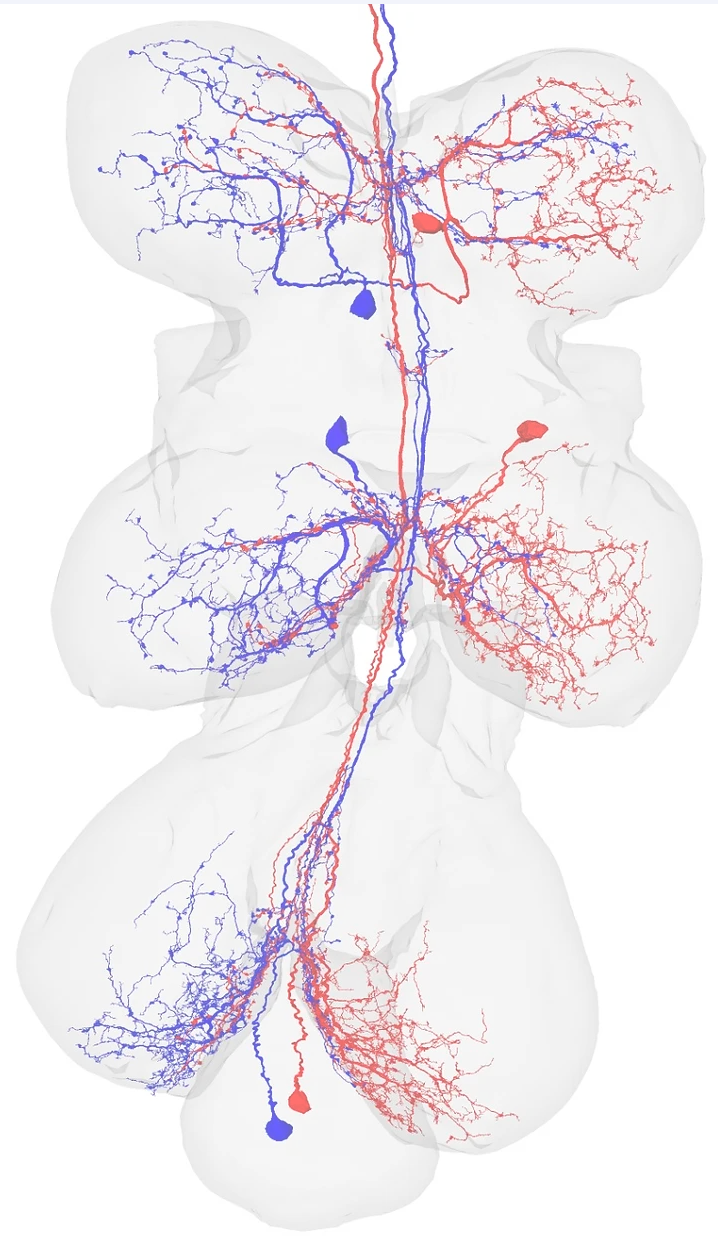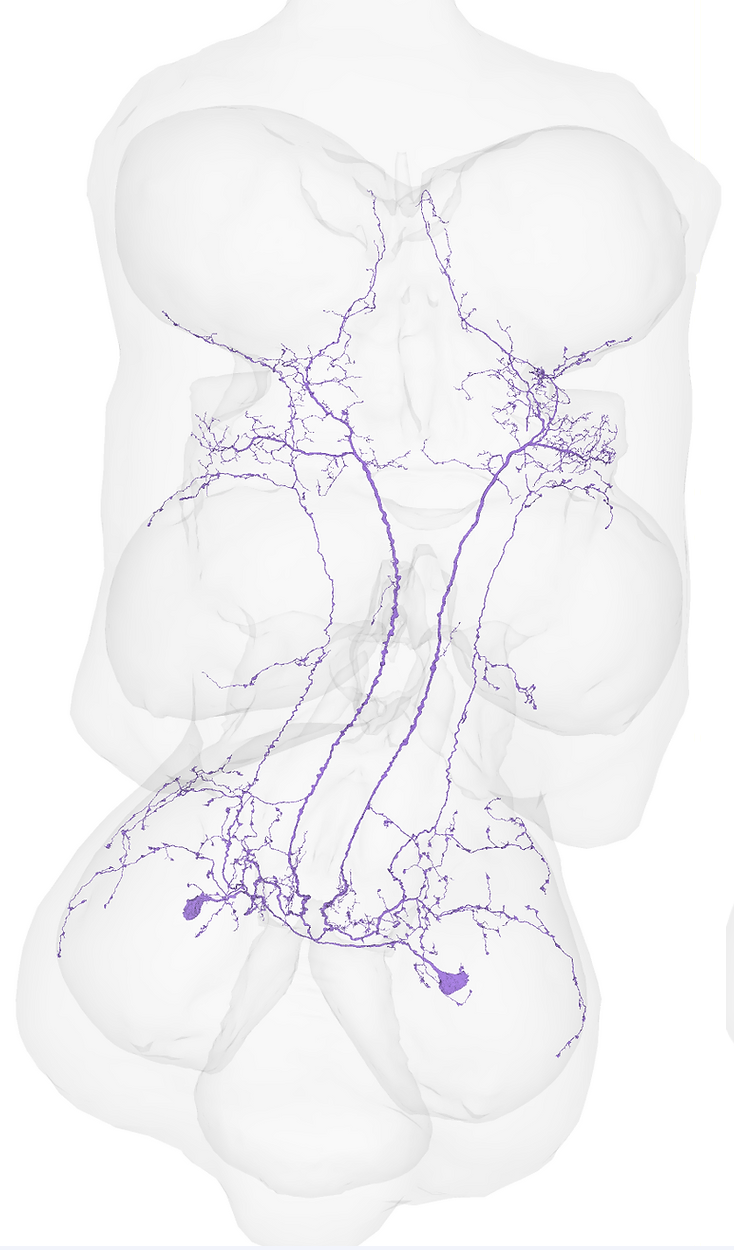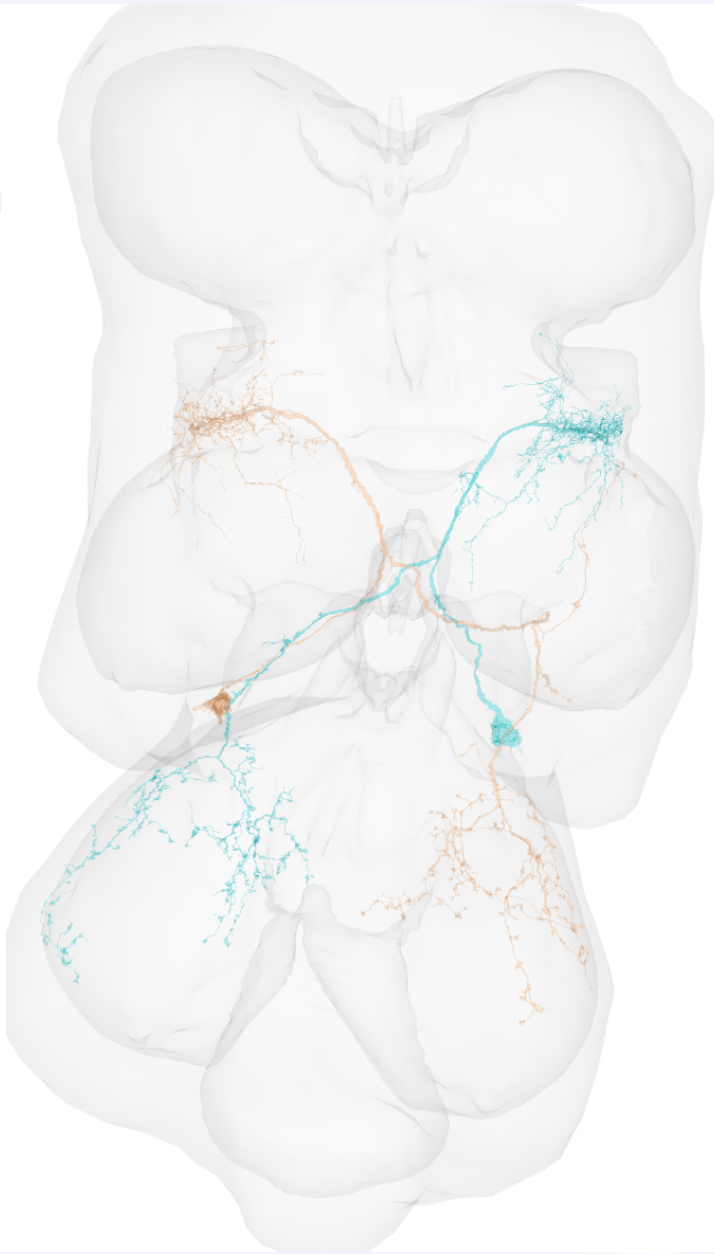Undergraduate Contribution
This is an exiting time for systems neuroscience. There are opportunities to discover circuit motifs and explain behavioral observations by identifying new neural connections. This work can be done remotely and safely, with training and collaborations by Zoom.
You would be exposed to cutting-edge anatomy and microscopy data, image analysis software, and graph theory for network interpretation. You would read science papers for background, trace new neurons for ongoing science projects, and meet weekly to share results. Initially, you would work with a team of peers with the opportunity to develop independent specialties suitable for honors theses in the future.
This is genuine research - the circuits you will trace start from my lab's behavioral discoveries - and will provide you with experience in experimental design, data analysis, and neuroscience suitable for graduate or medical school applications and biotech or tech industry positions.
Inhibition
Project Description:
*Drosophila* rely on their legs to sweep dust off their bodies during grooming. However, legs can only clean one part of their body at a time. Competition between different behaviors is resolved into a sequential set of behaviors. The Inhibition Team focuses on how these sequential behaviors are mediated, specifically the role of inhibitory GABAergic neurons in regulating these behaviors. Our team is mapping the circuitry of inhibitory 13A and 13B neurons that coordinate leg movements and action selection during grooming.
Team Leads:
Yarah Meijer, yarahmeijer@ucsb.eduYash Shah, yshah@ucsb.edu
LegPN
LegPN studies how neural circuitry revolving the 6 Leg Projection Neurons that control fly grooming.
The goal of LegPN is to understand the neural circuitry that governs leg rubbing in Drosophila. We found three pairs of command-like neurons which can trigger leg rubbing when activated. These neurons are named Leg rubbing Projection Neurons (LegPNs). They ascend from the fly ventral nerve cord (VNC) to the brain, but the activation of LegPN in decapitated flies still initiates leg rubbing, suggesting the VNC circuits are sufficient for legPN-induced leg rubbing. The activation of single legPN triggered goal-directed leg rubbing movements. For example, optogenetic activation of the left T1 LegPN makes flies clean the left front leg. We use fly VNC electron microscope data to reconstruct LegPNs as well as the pre-and postsynaptic partners. This allows us to study neuron connectivity upstream and downstream of LegPNs, and the ultimate goal is to use that information to better understand the neurons involved in the initiation of leg rubbing.
Team Leads:
David McNeill, davidmcneill@ucsb.edu
Ethan Zhang, yichenzhang811@ucsb.edu
Mago-No-Te
We identified a pair of command-like neurons that we named Mago-no-te (MGT: meaning “back-scratcher” in Japanese), whose optogenetic activation elicits thoracic grooming by the hindlimbs in both undusted and dusted flies. MGT are cholinergic interneurons with two distinct branches. The ventral medial branch contains post-synaptic sites between the T1 and T2 neuromeres, (the region of the ventral nerve cord that receives sensory information from the thorax), while the dorsal lateral branch contains a majority of the pre-synaptic sites, mostly concentrated in the T3 neuromere, close to the dendrites of the motor neurons innervating the hindlimb. This sensory-to-motor circuit connectivity is supported by fluorescent microscopy (GRASP analysis) and electron microscopy connectome reconstruction. In the next quarter, we want to study the sensory integration that induces MGT activation and why thorax grooming is at the bottom of the grooming hierarchy.
Team Leads:
Graci Novack, gracinovack@ucsb.eduPaul Tang, lindu@ucsb.edu
Wing wPN
WPN1 is a pair right and left command neurons which our team is responsible for exploring further. Our main focus is to explore the brain circuitry pathway both upstream and downstream of wPN1. In the upstream pathway, we trace the neuron pathway from sensory input starting with sensory neurons all the way to the command neuron. For the downstream pathway, we trace from the command neuron all the way to motor output through motor neurons. Our team is also responsible for proofreading the neurons as we discover them so we can get the most accurate representation of the circuitry. We do all of our work in neuroglancer and we use the website braincircuits in order to prioritize neurons by their number of synapses so we have an idea of where to begin proofreading and tracing.
Team Leads:
Kiana Hernandez, kianahernandez@ucsb.edu
